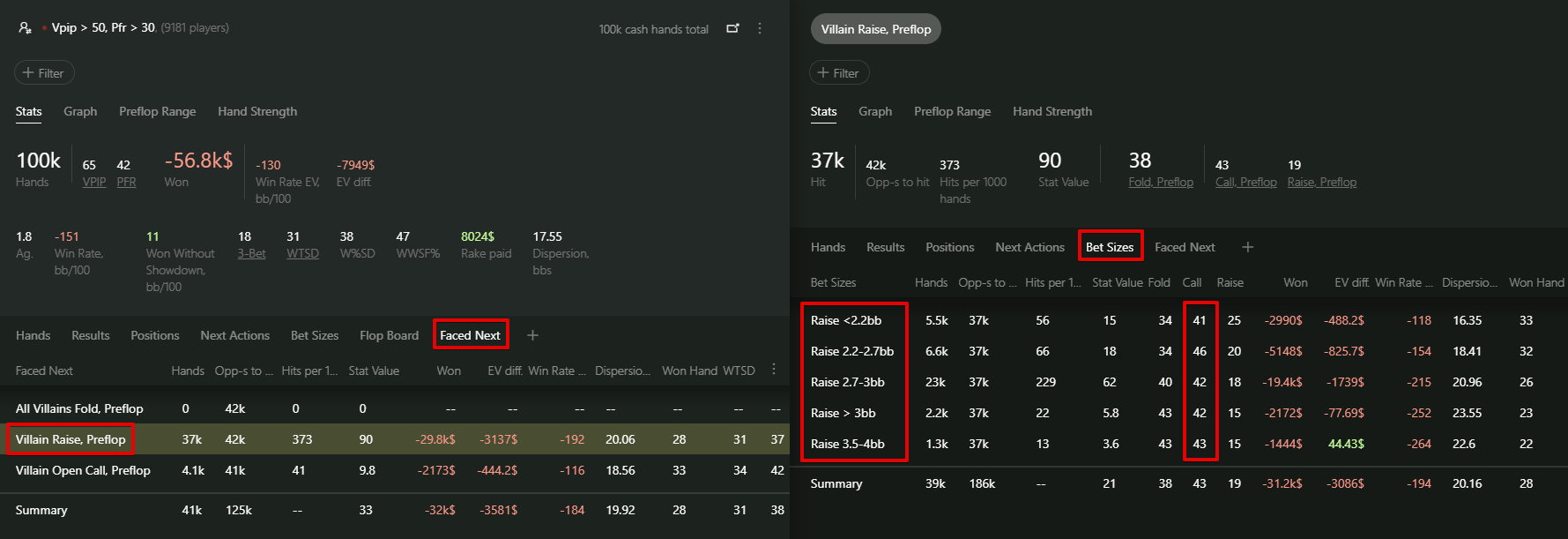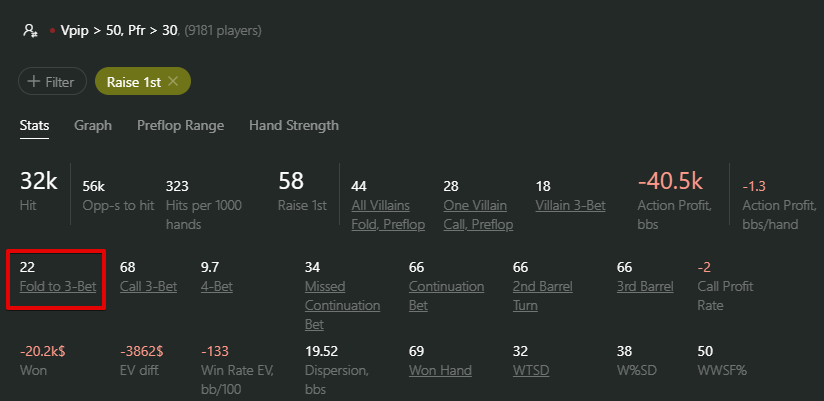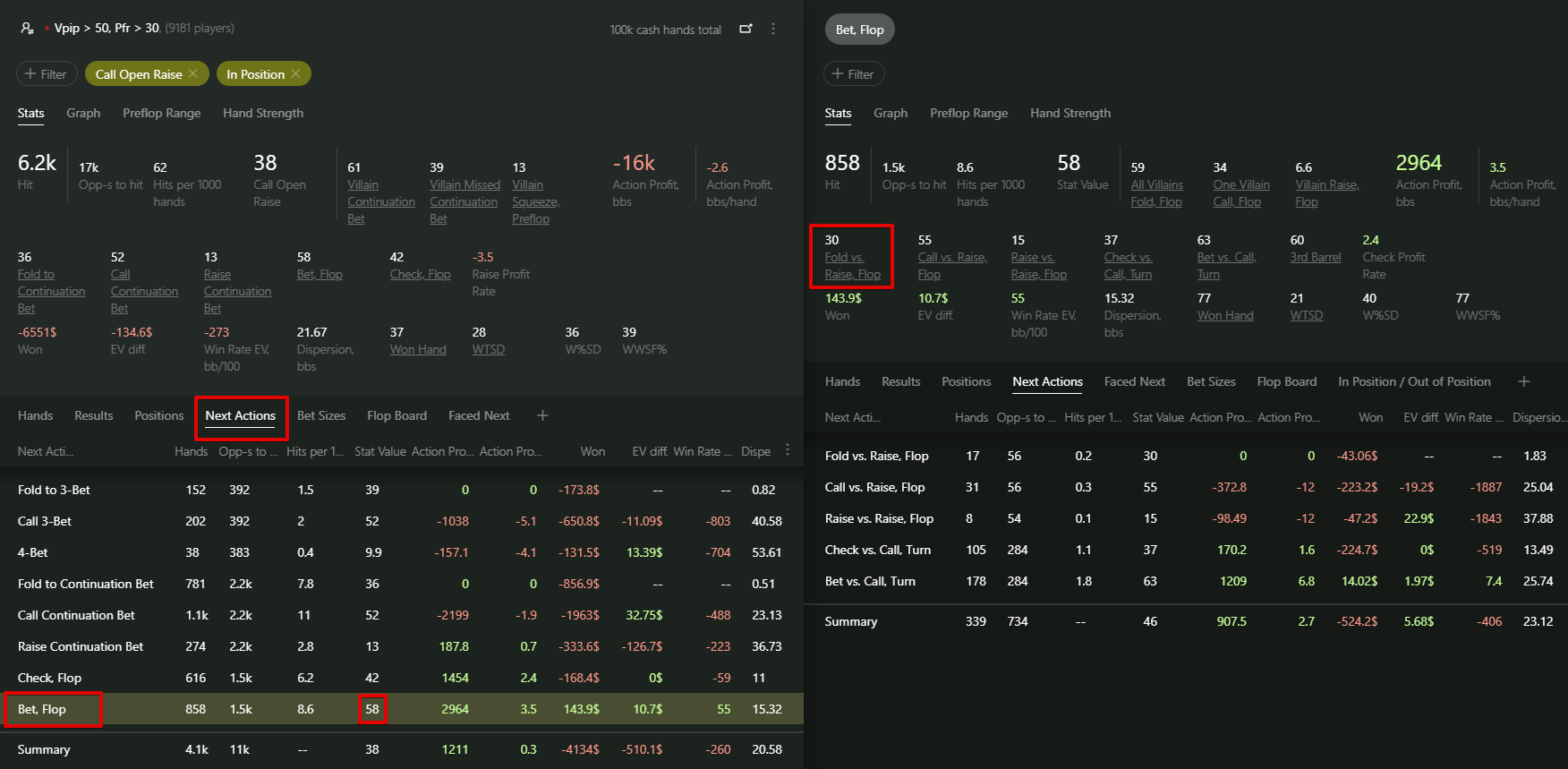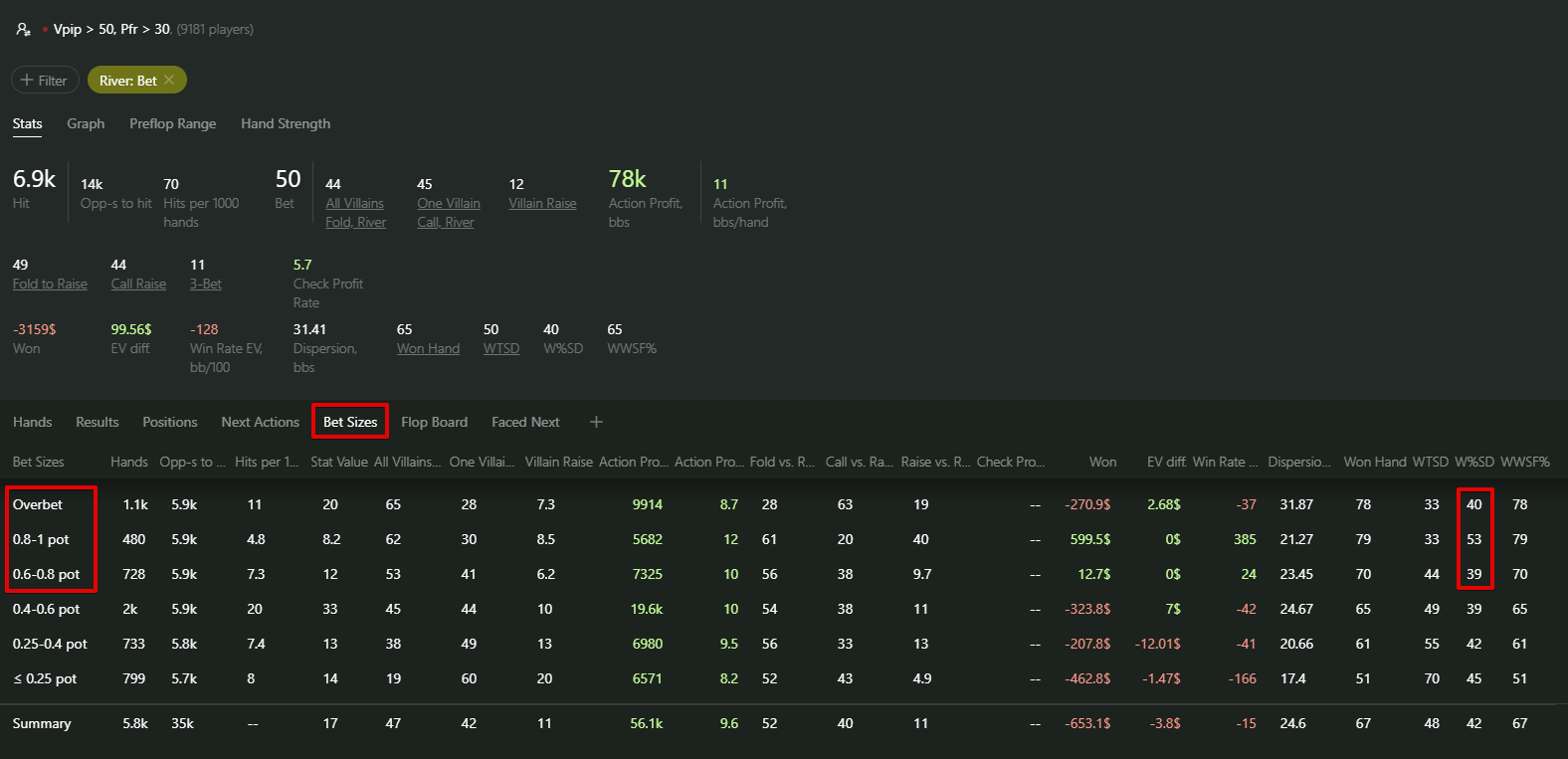5 exploitative adjustments to aggressive fish
Certainly, an aggressive fish adds a unique tension and dynamism to the game. Their constant bets and raises create an atmosphere of uncertainty, demanding quick adaptation from opponents.
In this article, we will discuss five crucial adjustments to the playing style of aggressive fish, allowing you to effectively exploit them at the poker table.
Table of Contents:
- Increase the size of your preflop raise with premium hands
- Check-raise strong hands out of position on the flop
- Refrain from bluffing with continuation bets with hands that cannot improve
- Pay attention to the size of the river bet
# Increase the size of your preflop raise with premium hands.
Most poker players are accustomed to sticking to standard sizes for their preflop open raises, regardless of the hands they are playing. The primary goal of this approach is to confuse opponents and prevent them from determining the strength of one’s hand.
However, recreational players don’t pay much attention to the sizes of preflop raises. If they like their hole cards, they enter the game without much thought, even if there was a raise several big blinds larger than usual in front of them.
Let’s track this tendency using multi-player reports. Thanks to this unique feature of Hand2Note 4, you can analyze trends among players with similar styles and develop exploitative strategies against them.

I filtered all aggressive fish in my database by setting VPIP parameters above 50% and PFR above 30%. Then I went to the “Faced Next” report, selecting situations where these players faced a preflop raise.
A new report appeared on the right, providing a more detailed description of this scenario. Clicking on the “Bet Sizes” tab in this report, we can observe that aggressive fish call preflop raises ranging from 2.2 BB to 4 BB with an approximately equal range of hands, averaging around 43%.
So, if you have a monster hand, don’t miss the opportunity to build a larger pot, starting as early as the preflop.
# Avoid bluff 3-bets preflop
Aggressive fish very rarely fold to 3-bets preflop. A 3-bet is like a challenge for them, and they are ready to call with a wide range, aiming to outplay you in the 3-bet pot no matter what.

In the report, I selected a scenario where aggressive fish made an open raise preflop. As shown in the screenshot above, when facing a 3-bet, they folded in only 22% of cases.
Therefore, it’s advisable to use a 3-bet only with strong hands that have an advantage over the fish’s calling range. Otherwise, you’ll find yourself in a large pot with a mediocre hand against an aggressive and unyielding opponent, making it challenging to play such situations profitably.
# Check-raise strong hands out of position on the flop
If you were the preflop aggressor and caught a very strong combination on the flop, such as a set or two top pair, playing straightforwardly and simply betting is recommended against most opponents. However, against an aggressive fish, it can be even more profitable to opt for a check-raise.

Using filters, I simulated a situation where the aggressive fish called the preflop raise and played in position on the flop. The reports navigation in Hand2Note 4 is designed so that you can easily navigate between related scenarios.
In the “Next Actions” report, I selected a scenario where these players made a bet on the flop, and since they were playing in position, there were no bets before them.
As we can see, aggressive fish attack a missed continuation bet on the flop in 58% of cases, which is quite frequent.
Clicking on the Bet Flop stat reveals another report on the right, indicating that, after making their bet, aggressive fish fold only in 30% of cases when facing a check-raise on the flop.
Therefore, such players will very often call your check-raises on the flop, and by employing this technique, you can inflate the pot and get the opportunity to play for stacks with a strong hand.
# Refrain from bluffing with continuation bets with hands that cannot improve
The continuation bet on the flop as a bluff is inherently a profitable move. However, recreational players dislike folding on early streets when the pot is still small. They often choose to call your bets even with weak hands, anticipating a display of weakness from you on subsequent streets, aiming to pressure you out of an already larger pot.
Let’s get back to the scenario where the aggressive fish called the preflop raise and see how these players react to continuation bets on the flop and the turn:

In the smart reports of Hand2Note 4, all the essential statistics are always at your fingertips. In the report on the left, we can see that these players don’t fold to a continuation bet on the flop very often, specifically in 41% of cases.
Then, by clicking on the “Call Continuation Bet” stat, we get a new report on the right, where we see that after calling a continuation bet on the flop, aggressive fish fold to the second barrel on the turn even less frequently – only in 35% of cases.
It is usually not possible to take down the pot from such an opponent with just one or two bets. Therefore, when planning a bluff, you should be prepared to make bets three times.
Based on this, it is better to apply a semi-bluff and choose hands with the potential to form a strong combination by the river, giving you the opportunity to win the pot at showdown. Avoid loading bets on pure bluffs and turning yourself into an aggressive fish.
# Pay attention to the size of the river bet
One of the distinguishing features of aggressive fish is their high frequency of river bluffs, and undoubtedly, you should be calling such opponents more often than passive players.
However, when making decisions on the river, among other factors, you must certainly take into account the size of your opponent’s bet.

I filtered all situations where aggressive fish made a bet on the river.
In the “Bet Sizes” report, we can notice that these players most often won at showdown when they bet from 80% to 100% of the pot. Consequently, bluffing is less likely with such bet sizes, and for calling, you should choose stronger hands.
Playing against aggressive fish requires a combination of analytical skills and the ability to adapt to their style. With the help of Hand2Note 4, you can easily identify their tendencies and turn their aggression to your advantage.
# 5 exploitative adjustments to aggressive fish
Certainly, an aggressive fish adds a unique tension and dynamism to the game. Their constant bets and raises create an atmosphere of uncertainty, demanding quick adaptation from opponents.
In this article, we will discuss five crucial adjustments to the playing style of aggressive fish, allowing you to effectively exploit them at the poker table.
Table of Contents:
- Increase the size of your preflop raise with premium hands
- Check-raise strong hands out of position on the flop
- Refrain from bluffing with continuation bets with hands that cannot improve
- Pay attention to the size of the river bet
# Increase the size of your preflop raise with premium hands.
Most poker players are accustomed to sticking to standard sizes for their preflop open raises, regardless of the hands they are playing. The primary goal of this approach is to confuse opponents and prevent them from determining the strength of one’s hand.
However, recreational players don’t pay much attention to the sizes of preflop raises. If they like their hole cards, they enter the game without much thought, even if there was a raise several big blinds larger than usual in front of them.
Let’s track this tendency using multi-player reports. Thanks to this unique feature of Hand2Note 4, you can analyze trends among players with similar styles and develop exploitative strategies against them.

I filtered all aggressive fish in my database by setting VPIP parameters above 50% and PFR above 30%. Then I went to the “Faced Next” report, selecting situations where these players faced a preflop raise.
A new report appeared on the right, providing a more detailed description of this scenario. Clicking on the “Bet Sizes” tab in this report, we can observe that aggressive fish call preflop raises ranging from 2.2 BB to 4 BB with an approximately equal range of hands, averaging around 43%.
So, if you have a monster hand, don’t miss the opportunity to build a larger pot, starting as early as the preflop.
# Avoid bluff 3-bets preflop
Aggressive fish very rarely fold to 3-bets preflop. A 3-bet is like a challenge for them, and they are ready to call with a wide range, aiming to outplay you in the 3-bet pot no matter what.

In the report, I selected a scenario where aggressive fish made an open raise preflop. As shown in the screenshot above, when facing a 3-bet, they folded in only 22% of cases.
Therefore, it’s advisable to use a 3-bet only with strong hands that have an advantage over the fish’s calling range. Otherwise, you’ll find yourself in a large pot with a mediocre hand against an aggressive and unyielding opponent, making it challenging to play such situations profitably.
# Check-raise strong hands out of position on the flop
If you were the preflop aggressor and caught a very strong combination on the flop, such as a set or two top pair, playing straightforwardly and simply betting is recommended against most opponents. However, against an aggressive fish, it can be even more profitable to opt for a check-raise.

Using filters, I simulated a situation where the aggressive fish called the preflop raise and played in position on the flop. The reports navigation in Hand2Note 4 is designed so that you can easily navigate between related scenarios.
In the “Next Actions” report, I selected a scenario where these players made a bet on the flop, and since they were playing in position, there were no bets before them.
As we can see, aggressive fish attack a missed continuation bet on the flop in 58% of cases, which is quite frequent.
Clicking on the Bet Flop stat reveals another report on the right, indicating that, after making their bet, aggressive fish fold only in 30% of cases when facing a check-raise on the flop.
Therefore, such players will very often call your check-raises on the flop, and by employing this technique, you can inflate the pot and get the opportunity to play for stacks with a strong hand.
# Refrain from bluffing with continuation bets with hands that cannot improve
The continuation bet on the flop as a bluff is inherently a profitable move. However, recreational players dislike folding on early streets when the pot is still small. They often choose to call your bets even with weak hands, anticipating a display of weakness from you on subsequent streets, aiming to pressure you out of an already larger pot.
Let’s get back to the scenario where the aggressive fish called the preflop raise and see how these players react to continuation bets on the flop and the turn:

In the smart reports of Hand2Note 4, all the essential statistics are always at your fingertips. In the report on the left, we can see that these players don’t fold to a continuation bet on the flop very often, specifically in 41% of cases.
Then, by clicking on the “Call Continuation Bet” stat, we get a new report on the right, where we see that after calling a continuation bet on the flop, aggressive fish fold to the second barrel on the turn even less frequently – only in 35% of cases.
It is usually not possible to take down the pot from such an opponent with just one or two bets. Therefore, when planning a bluff, you should be prepared to make bets three times.
Based on this, it is better to apply a semi-bluff and choose hands with the potential to form a strong combination by the river, giving you the opportunity to win the pot at showdown. Avoid loading bets on pure bluffs and turning yourself into an aggressive fish.
# Pay attention to the size of the river bet
One of the distinguishing features of aggressive fish is their high frequency of river bluffs, and undoubtedly, you should be calling such opponents more often than passive players.
However, when making decisions on the river, among other factors, you must certainly take into account the size of your opponent’s bet.

I filtered all situations where aggressive fish made a bet on the river.
In the “Bet Sizes” report, we can notice that these players most often won at showdown when they bet from 80% to 100% of the pot. Consequently, bluffing is less likely with such bet sizes, and for calling, you should choose stronger hands.
Playing against aggressive fish requires a combination of analytical skills and the ability to adapt to their style. With the help of Hand2Note 4, you can easily identify their tendencies and turn their aggression to your advantage.















